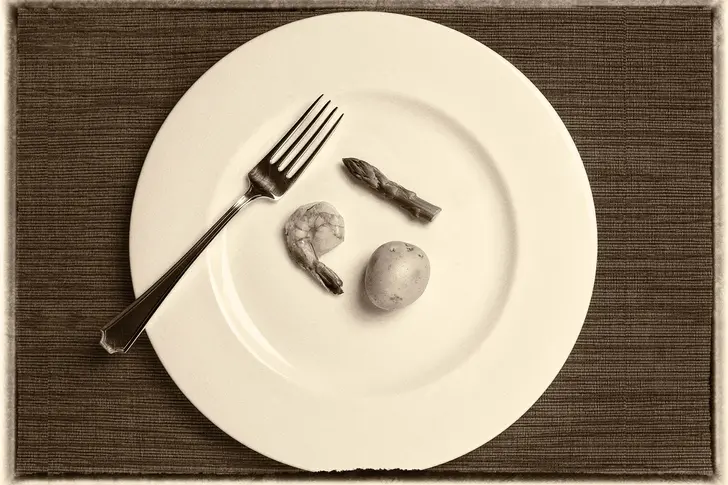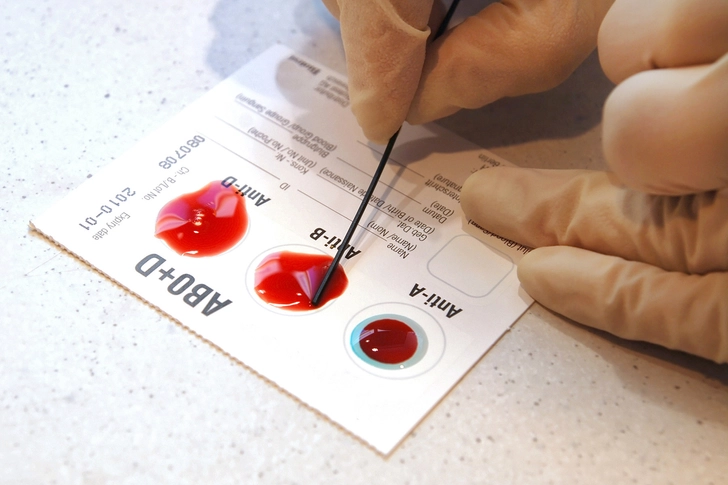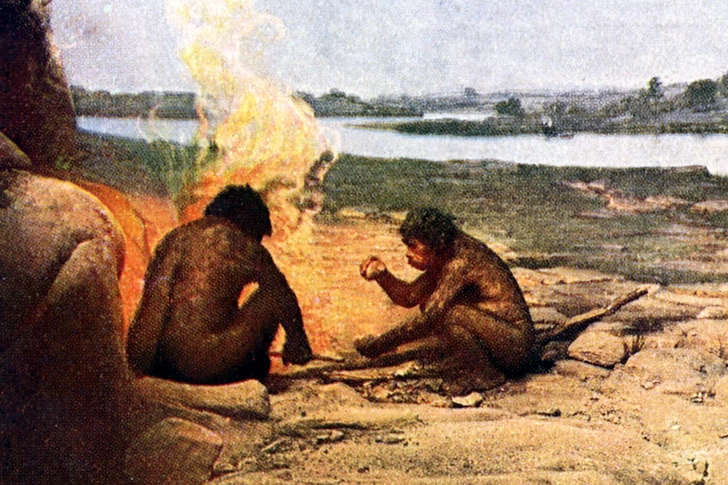From Graham Crackers to Cavemen: A History of Fad Diets


For more than a century, fad diets have been irresistible to anyone who wants to melt away the pounds and fit into a new outfit right now. “Fad diets tend to be unsustainable, overpromise on their results, or completely omit an entire food group,” says Shanon Whittingham, RDN, a nutritionist in Brooklyn, NY, and founder of The Nourish Center. Here are some of the craziest ways Americans have tried to slim down over the years.

The Graham Diet
This diet was less about getting rid of your love handles, and more about getting rid of your love urges. Created by evangelical minister Sylvester Graham in the 1830s, who thought our carnal appetites could be blamed on fatty or even tasty food, this diet banned spices, meat, and alcohol. Think of Graham every time you bite into a s’mores by a campfire (yep, a bland version of the Graham cracker was originally invented for this diet!).

The Apple Cider Vinegar Diet
The 19th-century Romantic poet Lord Byron may have been the first metrosexual; he bragged about drinking a mix of apple cider vinegar and water to maintain his svelte figure. A similar diet sticks around today. “Our stomach naturally produces acid that is much stronger than apple cider vinegar, so despite the claims that it can help digest food better, the research is lacking,” Whittingham says. At least it makes a tasty salad dressing.

The Lucky Strike Diet
In perhaps one of the most misguided advertising campaigns ever, Lucky Strike Cigarettes came up with the slogan “Reach for a Lucky Instead of a Sweet” in the 1920s to entice women to lose weight by smoking.

The Grapefruit Diet
Who doesn’t love a juicy slice of grapefruit – but for every meal? This warhorse of the diet world has been hanging around since the 1930s, claiming that if you eat a half a grapefruit with breakfast, lunch, and dinner, you’ll miraculously melt away the pounds. While grapefruit is a good source of vitamins A and C and fiber, Whittingham points out a single fruit is not a key to weight loss, and it can even interfere with the body’s ability to break down certain medications. How’s that for a squirt in the eye?

Master Cleanse
Created in 1941, this is the granddaddy of all detox diets. For 10 days, you consume nothing but a drink made of lemon juice, maple syrup, cayenne pepper, and water, plus a laxative tea (mmm, salivating yet?). “Any diet restricting entire food groups for prolonged periods is not a sustainable and healthy way to lose weight and keep the weight off,” Whittingham says of this fad that had a resurgence in the 2000s. This diet really is making lemonade out of lemons.

The Cabbage Soup Diet
If you sniff hard enough, you may remember the stinky smell of cabbages wafting across American kitchens in the 1980s. This 7-day plan restricts dieters to just a few foods each day, such as bananas or brown rice, plus endless bowls of cabbage soup. “It includes almost no protein and is very low in carbs and fats, not to mention it’s very hard to stick to because it’s so unappealing,” Whittingham says. We have one thing to say about a cabbage-based diet: flatulence.

Scarsdale Diet
Now mostly remembered for the scandal when its creator, Herman Tarnower, MD, was murdered by his mistress, this 1970s diet claimed you could drop 20 pounds in 2 weeks by eating just 1,000 calories a day. “Any weight loss you see on the scale would most likely be from water weight, and not body fat,” Whittingham says. “As soon as you come off this diet, you’d gain it all right back.” Thankfully, this fad seems to have stayed in the ‘70s, along with polyester pantsuits and pet rocks.

Beverly Hills Diet
Created by former actress Judy Mazel in 1981, this best-selling diet book laid out some super-strict rules, including eating nothing but fruit for 10 days, and never eating carbs and proteins on the same day.

The Blood Type Diet
Sounds like the title of a cheesy vampire movie, but this is just another fad diet with little to no evidence to back it up. Published by a naturopathic doctor in 1996, this diet set strict food and exercise rules for each of the four blood types, A, B, AB, and O. Maybe just say N.O.

The Zone
This diet, created by Barry Sears, PhD, relies on some pretty serious math: Every meal must be comprised of 30% protein, 30% fat, and 40% carbs. Whittingham says the balance of nutrients and focus on lean proteins and monounsaturated fats is a good idea, but the diet’s claims that it will burn fat by lowering inflammation are not backed by research. Plus, all that measuring and calculating can put you in the annoyed zone.

Keto Diet
The first thing to know about this high-fat, low-carb diet is that it was originally created to treat children with epilepsy. For adults who just want to fit into their prepandemic pants, it’s a hot mess: “You may lose some weight, but this diet can also lead to low blood pressure, kidney stones, constipation, and nutrient deficiencies,” Whittingham says. Still, this has not stopped everyone’s cousin and co-worker from posting endlessly about it on Facebook.

Paleo Diet
This diet includes only foods our ancestors could have hunted or gathered during the paleolithic era (i.e., before Starbucks). This means meat, fish, fruits, vegetables, and seeds, but no dairy, grains, or legumes. “There are some good things about this diet – it restricts processed food, soft drinks, trans fats, and artificial sweeteners,” Whittingham says. “But by eliminating certain foods, it can put you at risk for calcium and vitamin D deficiencies.” Considering the lifespan of a paleo man was just 35 years, we’ll pass.
Images provided by:
- VisualField / Getty Images
- Jena Ardell / Getty Images
- boonchai wedmakawand / Getty Images
- Hulton Archive / Getty Images
- Lubo Ivanko / Getty Images
- Bettmann / Getty Images
- lenazap / Getty Images
- Robert Stiggins / Getty Images
- aluxum / Getty Images
- wakila / Getty Images
- Oscar Wong / Getty Images
- wildpixel / Getty Images
- Culture Club / Getty Images
SOURCES:
The Atlantic: “Looking to Quell Sexual Urges? Try the Graham Cracker.”
Harvard Health: “Apple Cider Vinegar Diet: Does It Really Work?”
Morisset Library: “History of Weight and Slimness Advertising.”
Vanderbilt Medical Center: “Effectiveness of Grapefruit Diet.”
Cornell University: “The Rise and Fall of the Master Cleanse Diet.”
Washington Post: “The Cabbage Soup Diet.”
New York Magazine: “The Head Mistress and the Diet Doctor.”
New York Times: “Judy Mazel, Creator of the Beverly Hills Diet, Is Dead at 63.”
Harvard Health: “Diet Not Working, Maybe It’s Not Your Type.”
Mayo Clinic: “Glycemic index diet: What's behind the claims”
National Library of Medicine: “History of the Ketogenic Diet.”
Mayo Clinic: “Paleo Diet: What Is It and Why Is It So Popular?”
Shannon Whittingham, RDN, founder of The Nourish Center [email protected]
